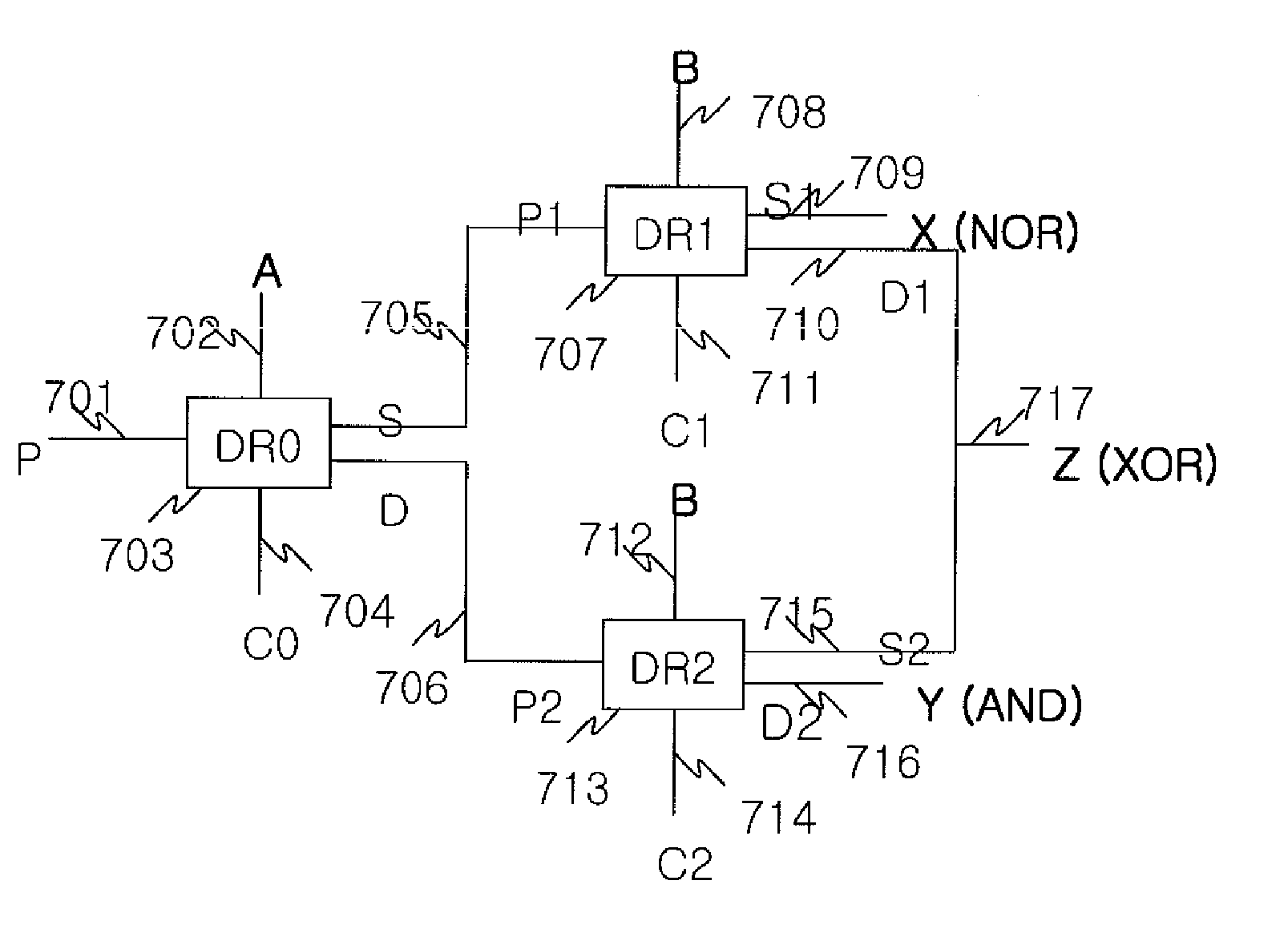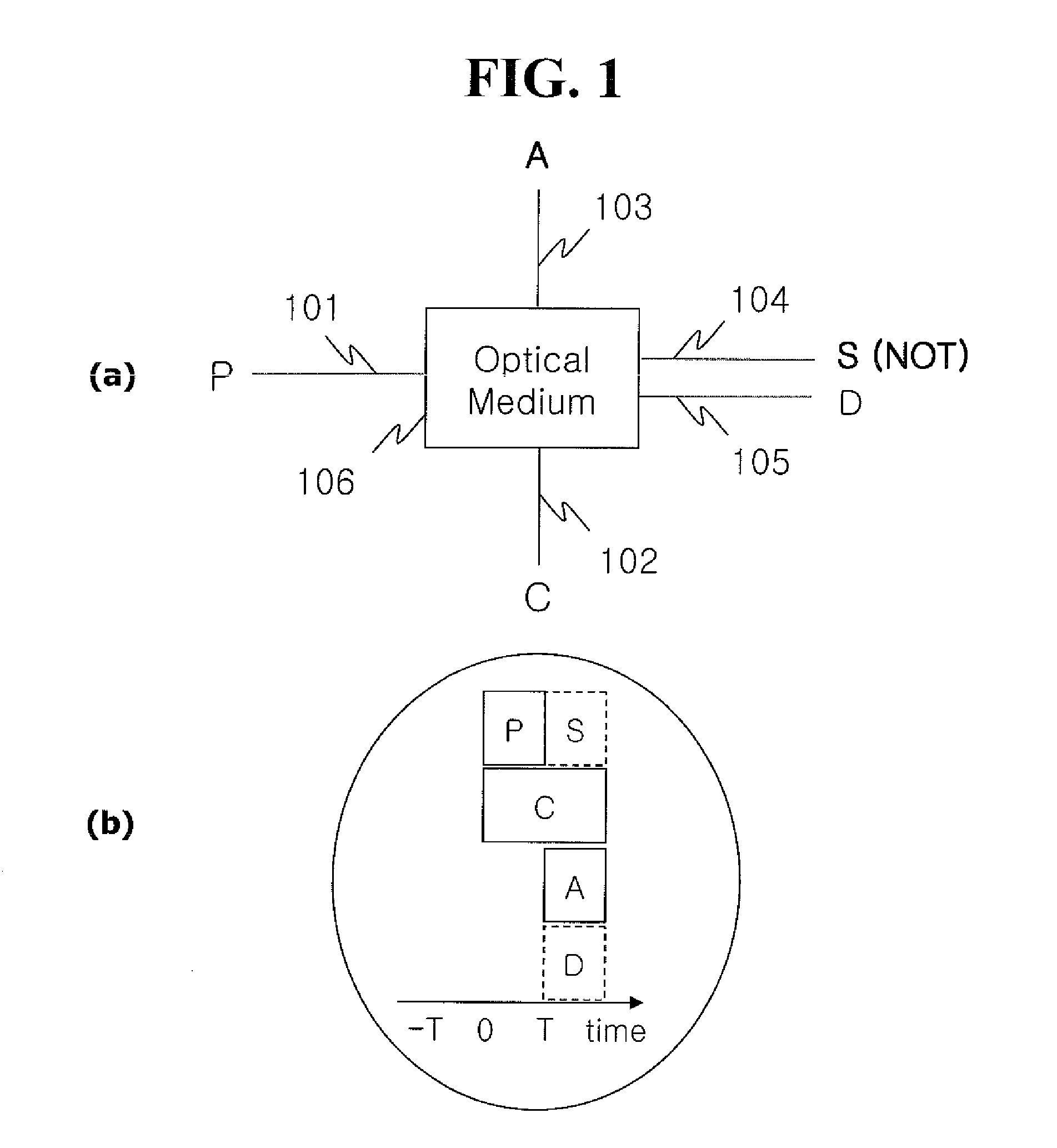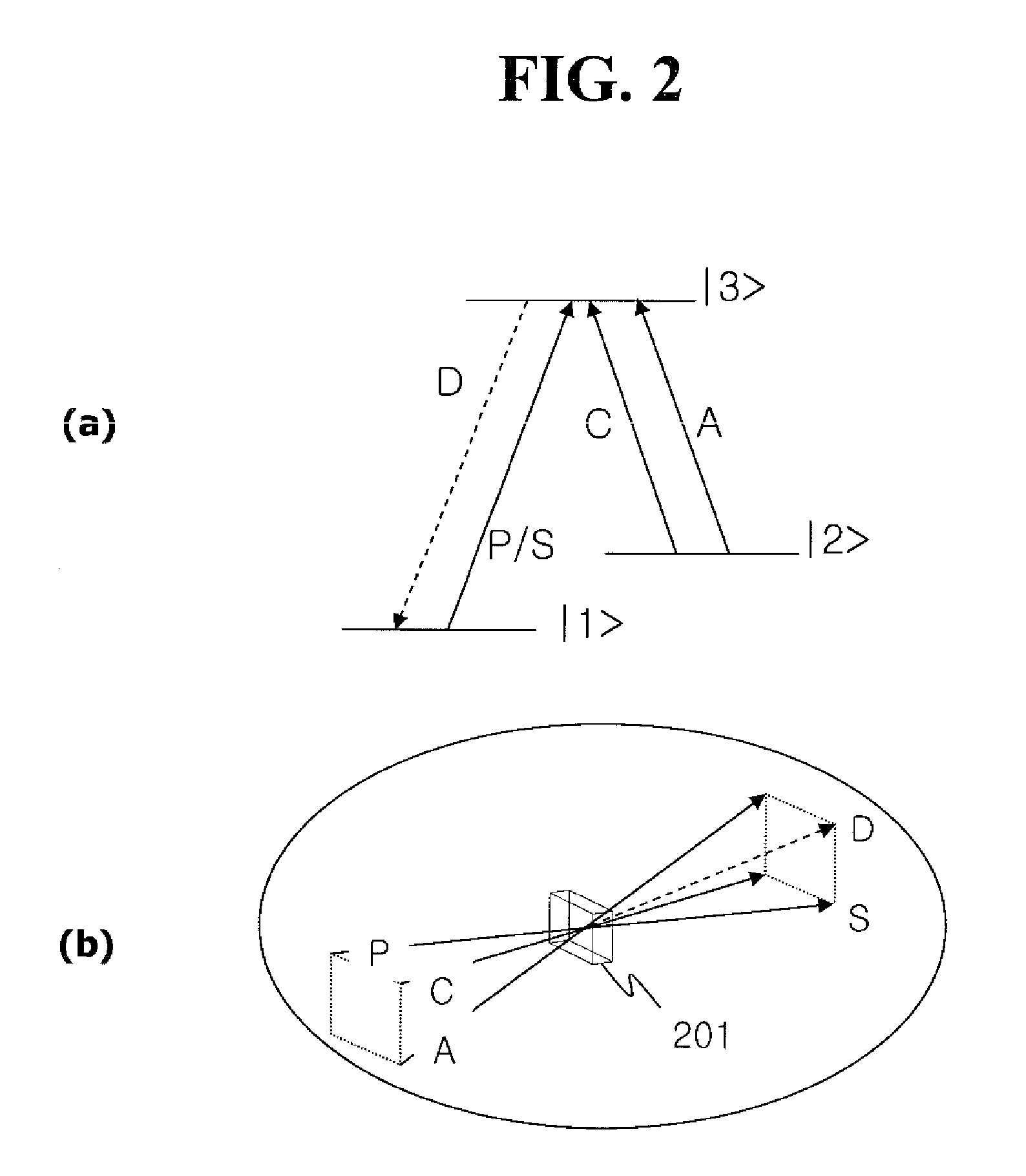Delayed optical logic gates
a technology of optical logic and delay, applied in the field of delay optical logic gates, can solve the problems of data traffic in fiber-optic communication lines that needs to be temporally delayed, and the all-optical active buffer memory has not been implemented
- Summary
- Abstract
- Description
- Claims
- Application Information
AI Technical Summary
Benefits of technology
Problems solved by technology
Method used
Image
Examples
Embodiment Construction
[0035]To get a better understanding, reference is now made to the drawings which illustrate the preferred embodiments of the present invention.
[0036]FIG. 1 (a) shows a delayed optical router as a basic building block for the present invention of the delayed optical logic gates.
[0037]FIG. 1(a) describes a delayed optical logic gate, NOT, where a single delayed optical router is used. Letters P, C, A, S, and D stand for light pulse at different propagation directions kP, kC, kA, kS, and kD, respectively. The numbers from 101 to 105 stand for lights as well as physical channels such as optical waveguide or free space used for the laser beams. The number 106 stands for a nonlinear optical medium. According to the delayed optical router, which will be explained below, the output S (104) is always OFF whenever the logical input light A (103) is switched ON, and vice versa. Here it should be noted that the light C may be continuous if the frequency of the light C is different from the ligh...
PUM
| Property | Measurement | Unit |
|---|---|---|
| frequency | aaaaa | aaaaa |
| conduction band | aaaaa | aaaaa |
| size | aaaaa | aaaaa |
Abstract
Description
Claims
Application Information
 Login to View More
Login to View More - R&D
- Intellectual Property
- Life Sciences
- Materials
- Tech Scout
- Unparalleled Data Quality
- Higher Quality Content
- 60% Fewer Hallucinations
Browse by: Latest US Patents, China's latest patents, Technical Efficacy Thesaurus, Application Domain, Technology Topic, Popular Technical Reports.
© 2025 PatSnap. All rights reserved.Legal|Privacy policy|Modern Slavery Act Transparency Statement|Sitemap|About US| Contact US: help@patsnap.com



